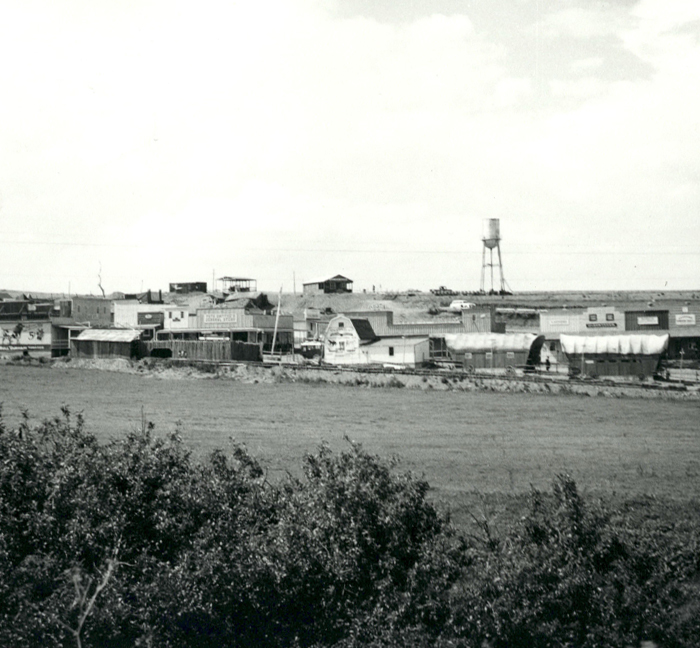When Pete Symth, a radio personality, envisioned creating a Western American town in 1960, he imagined a place where visitors could explore farms and fields, bale hay in a barn and shop in a saddlery. He knew tourists would want a genuine Western experience.
The trick was making it feel authentic.
Coming up with a name and location was the first challenge. The site needed to be squarely in the American West and the name had to be quirky enough to fit in with other Western towns, like Rough and Ready, California; Big Foot, Texas; or Mexican Hat, Arizona. Giving it the feel of establishment would offer credibility. So, Pete and party drew on an association with a real Colorado mining town called Tincup, settling on the name “East Tincup” to be built near Golden, Colorado.
Once a vision was settled, construction on East Tincup began with a huge barn erected near the center of town. Other structures included an elevated water tower, general store and housing for a variety of traditional western trades.
But East Tincup still needed that all-important stamp of authenticity. It needed something both common and recognizable in most small Western towns.
Enter Levi’s®.
Born in the American West, advertisements for the Levi’s® brand had become a visible small-town feature. Early Levi’s® ads were painted on the sides of buildings or appeared on posters plastered on walls. By the 1930s, LS&Co. promotions even included the phrase, “Patronize Your Hometown Merchant.”

So naturally, East Tincup needed a Levi’s® advertisement painted on the face of its massive barn.
Pete’s team reached out to Levi Strauss & Co. and the company agreed to help, engaging a painter who could create our recognizable Two Horse Trademark. The artist repurposed used metal signs, painting the blank backsides and cutting out separate horses and a pair of riveted overalls. He included key phrases like, “Patented May 20, 1873” and “Every Garment Guaranteed.”
The end results were eye-catching, though not exactly in the way Pete and his team had in mind. Instead of “Original Riveted,” the sign read “Original ‘Rivited.”
Luckily, few people caught the spelling error, including LS&Co.’s own Bob Lipman. “Our newly painted sign . . . is in the center of pictures in most instances,” Bob wrote after a visit in 1961. “Owners of East Tincup are starting out with a pilot film for TV . . . Cost is expected to be about 10% of Hollywood’s. You no doubt have bill from painter.”
And so East Tincup began. But it was short-lived.
Like the rise and fall of many boom-and-bust towns of the American West, the site was dismantled and removed only three years later, in 1964, by Willis Webber. The painted metal pieces from the barn fell into the hands of an antique dealer. Eventually, the sign was acquired by the Autry Museum of the American West in Los Angeles.
Today, the Levi’s® sign is all that remains of East Tincup, a testament to the brand’s longevity — even in the boom-and-bust west.







